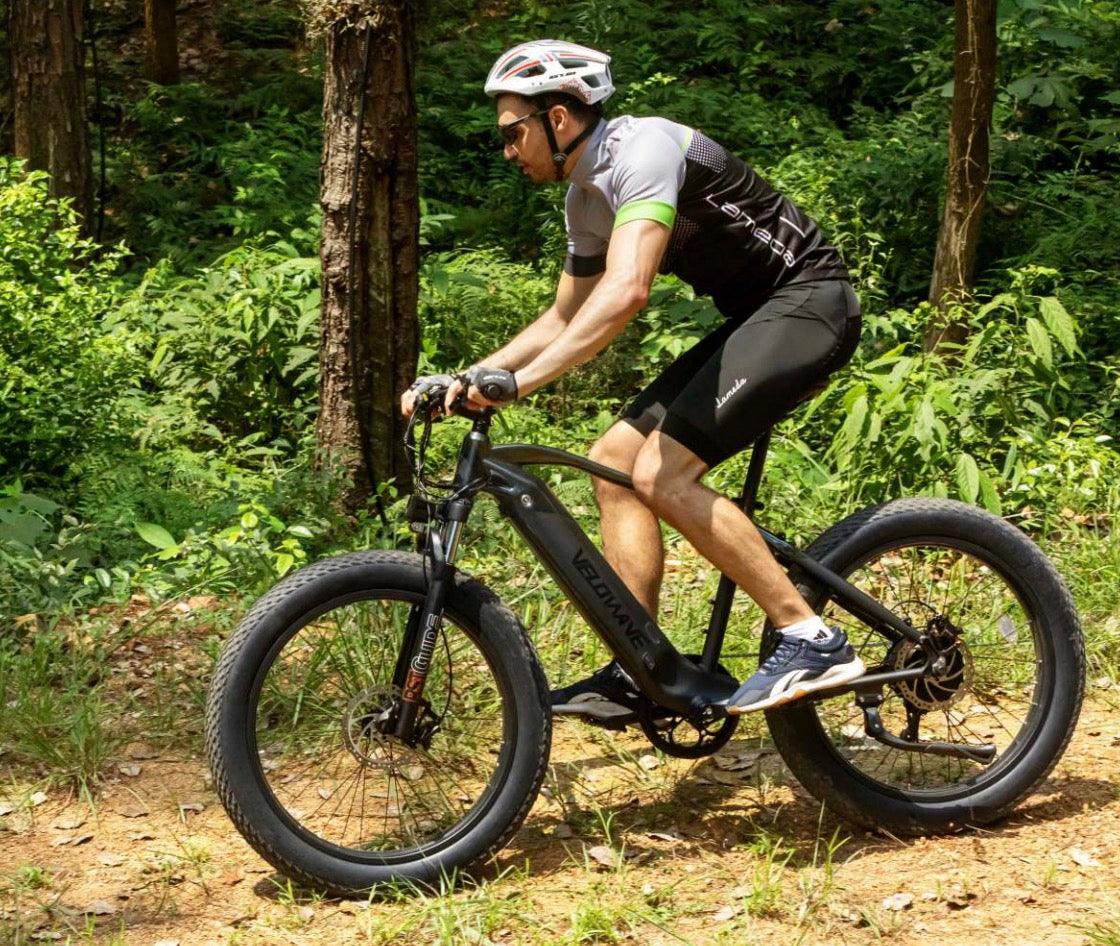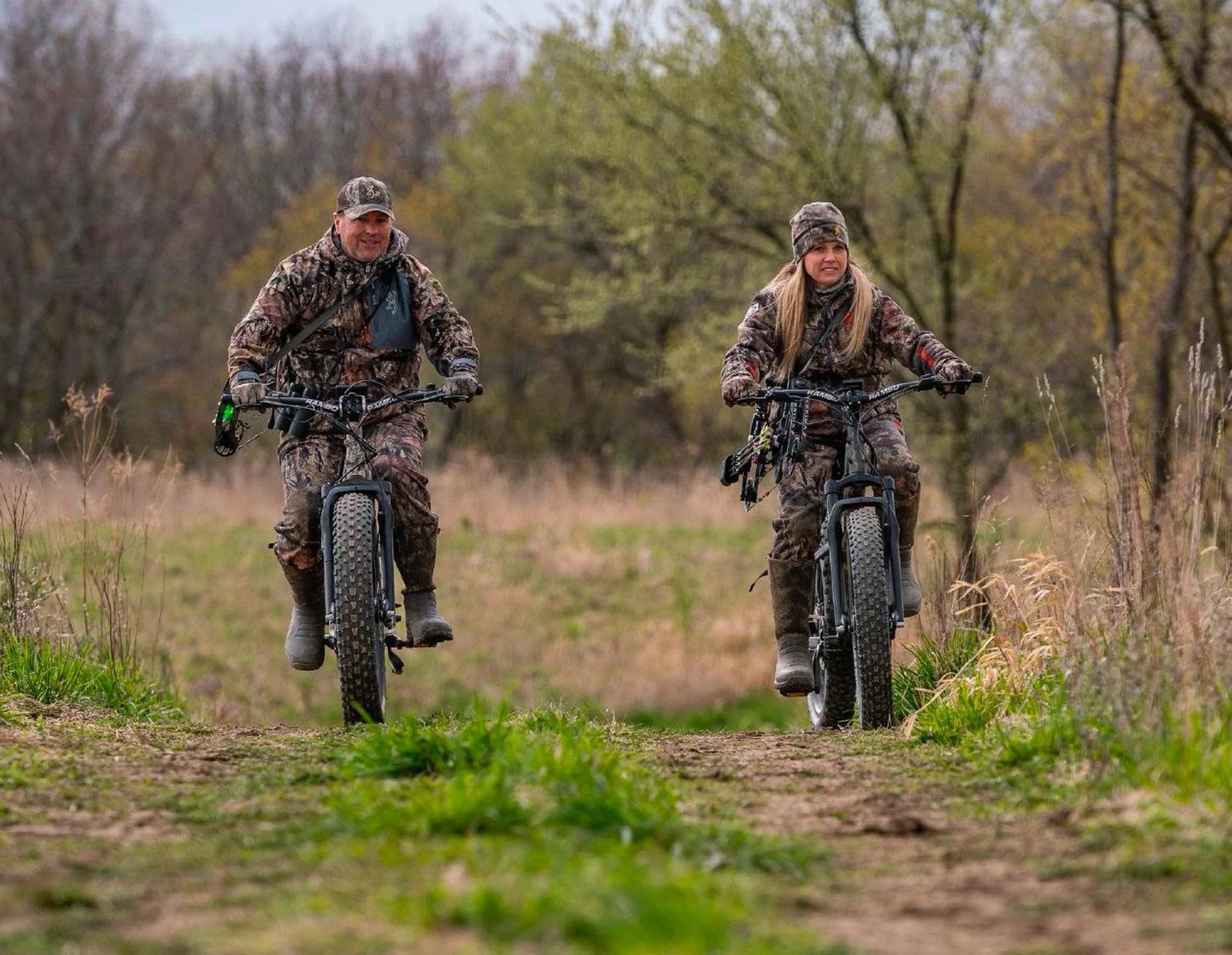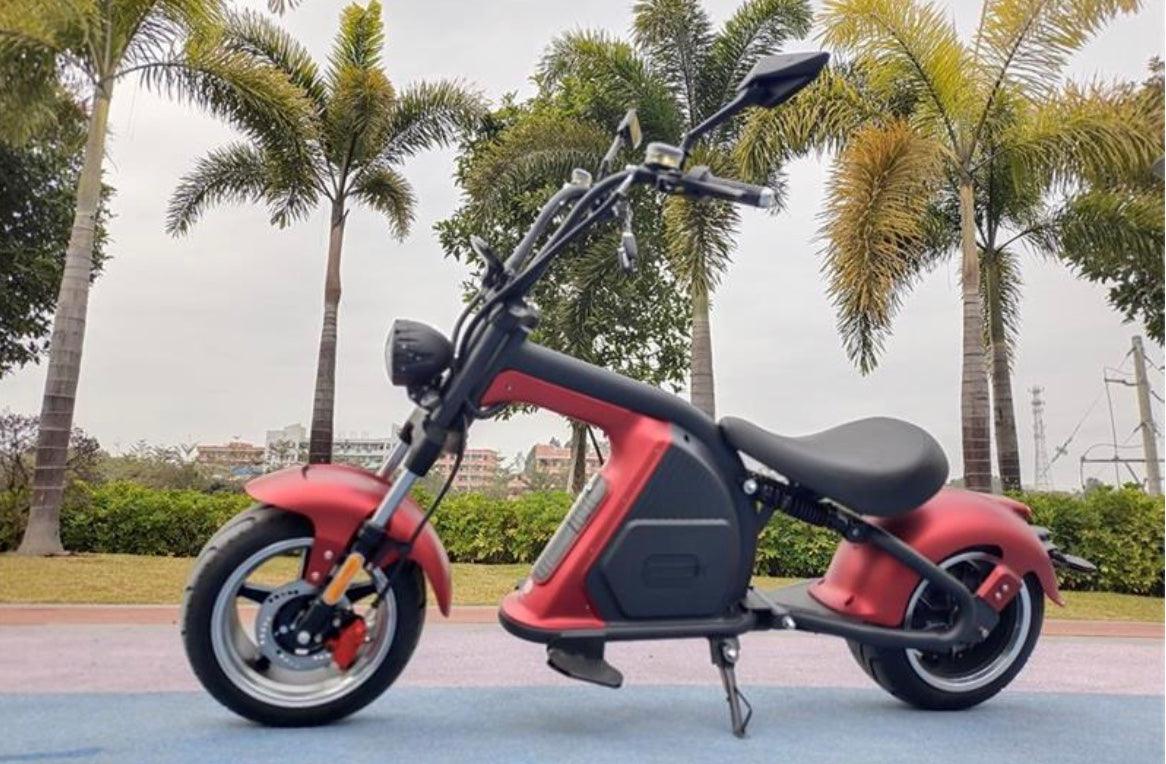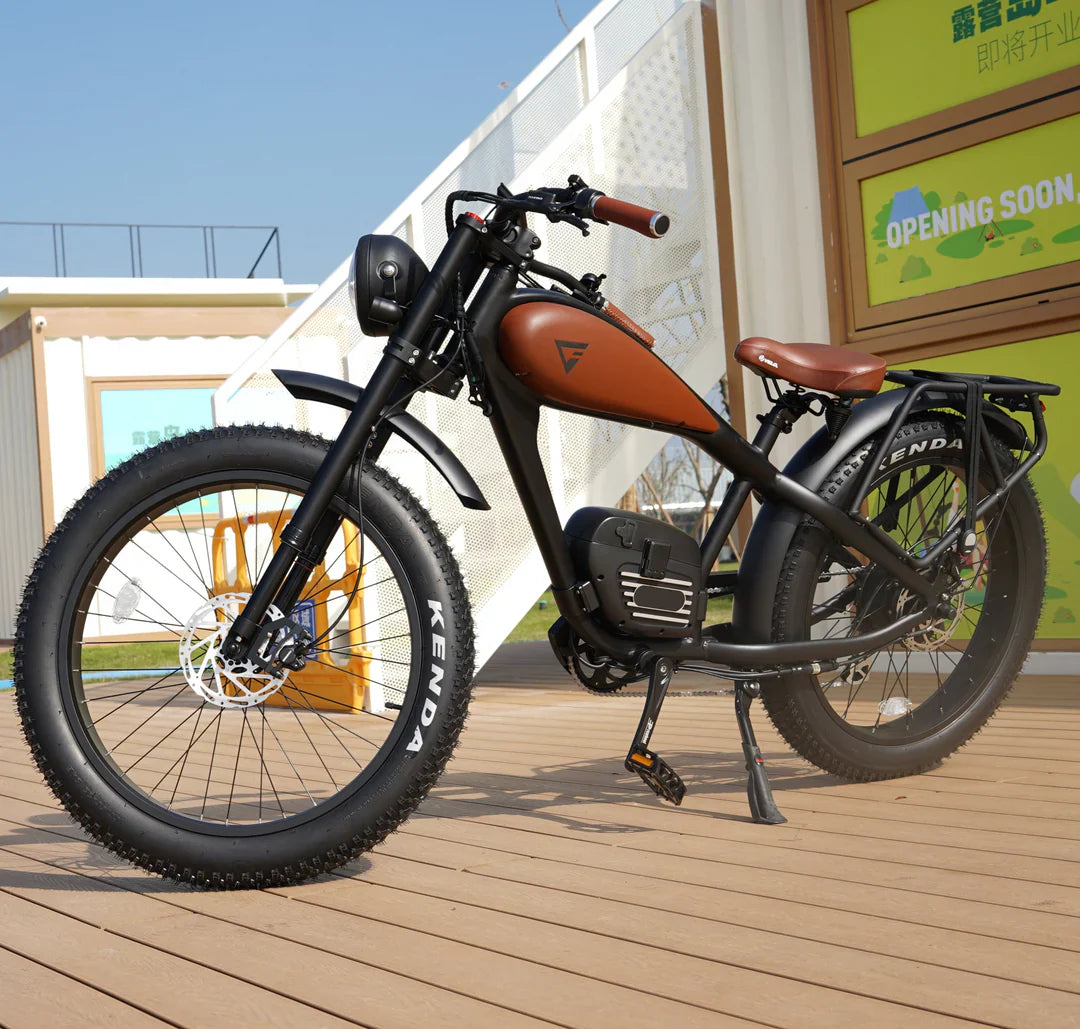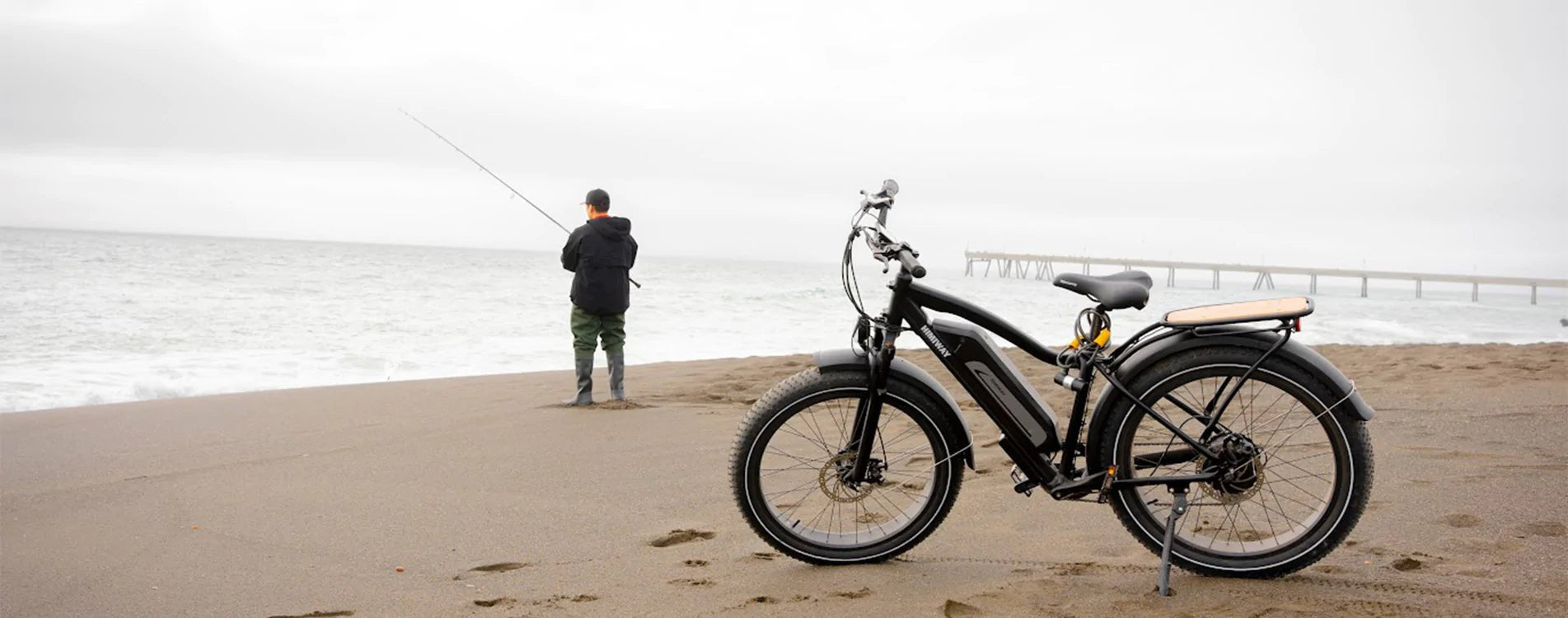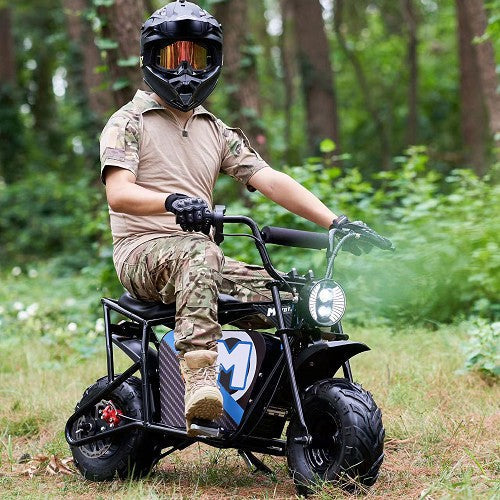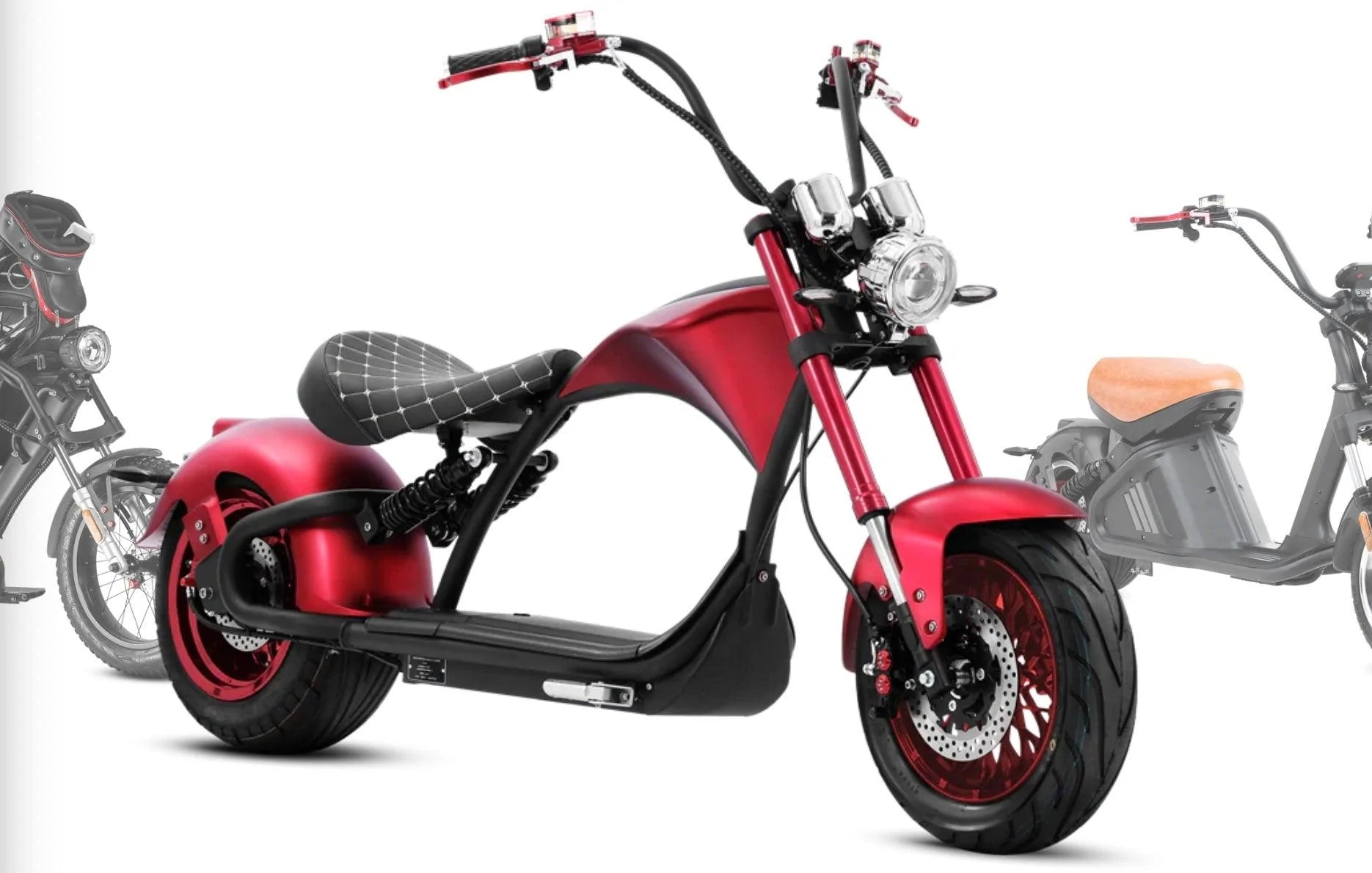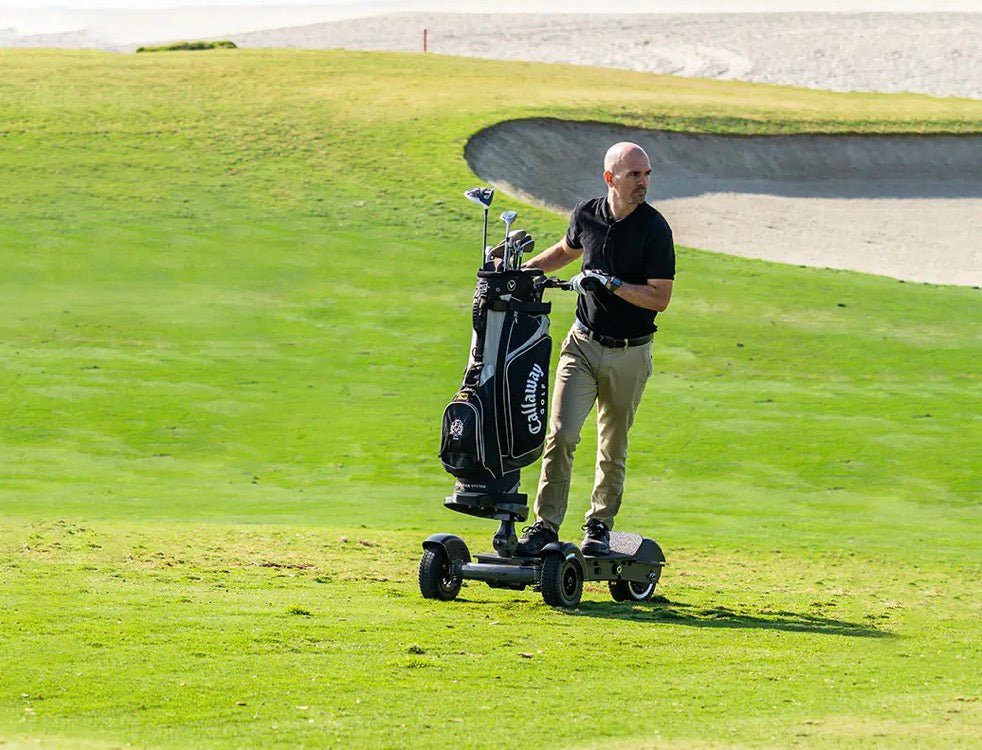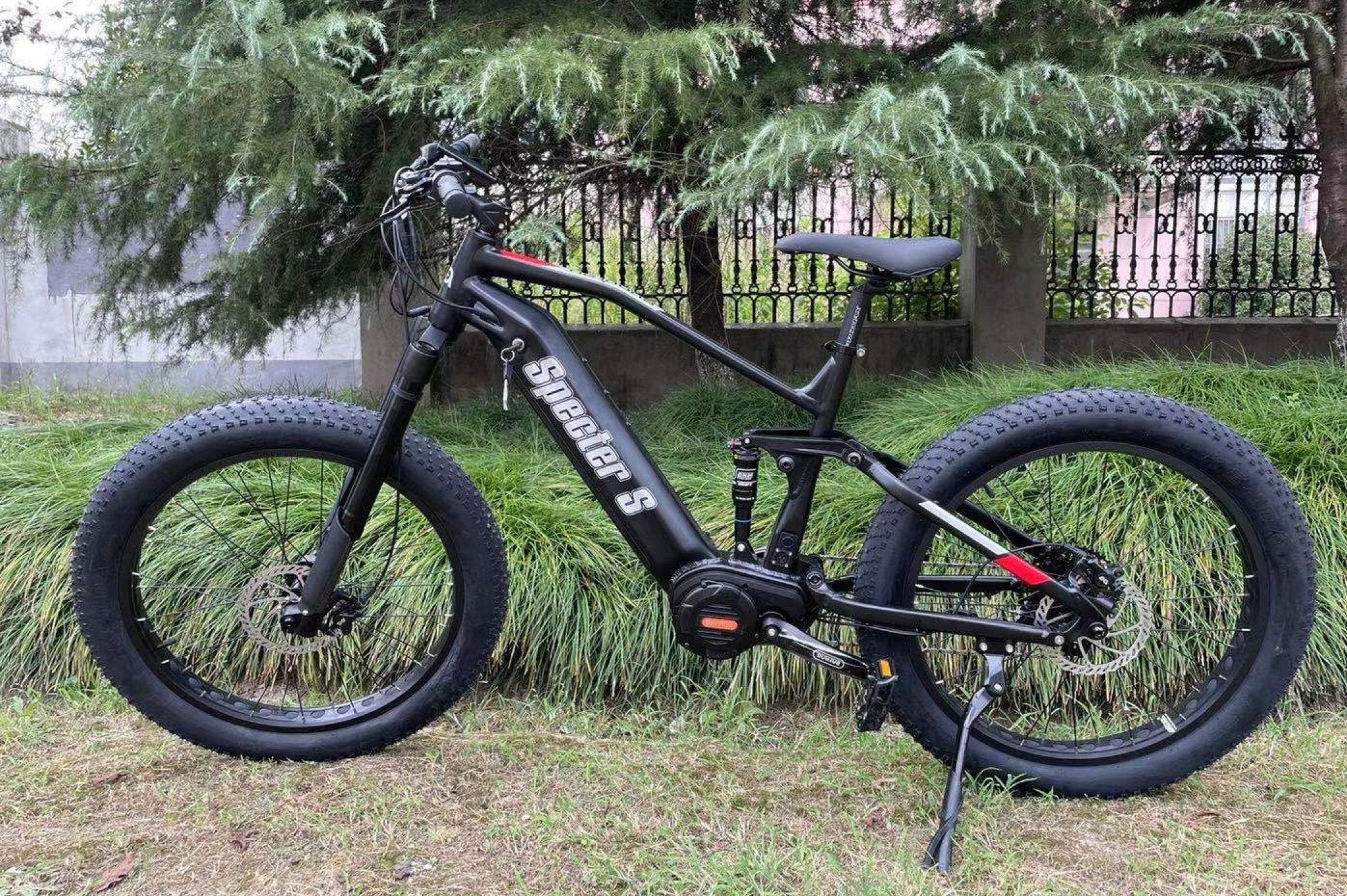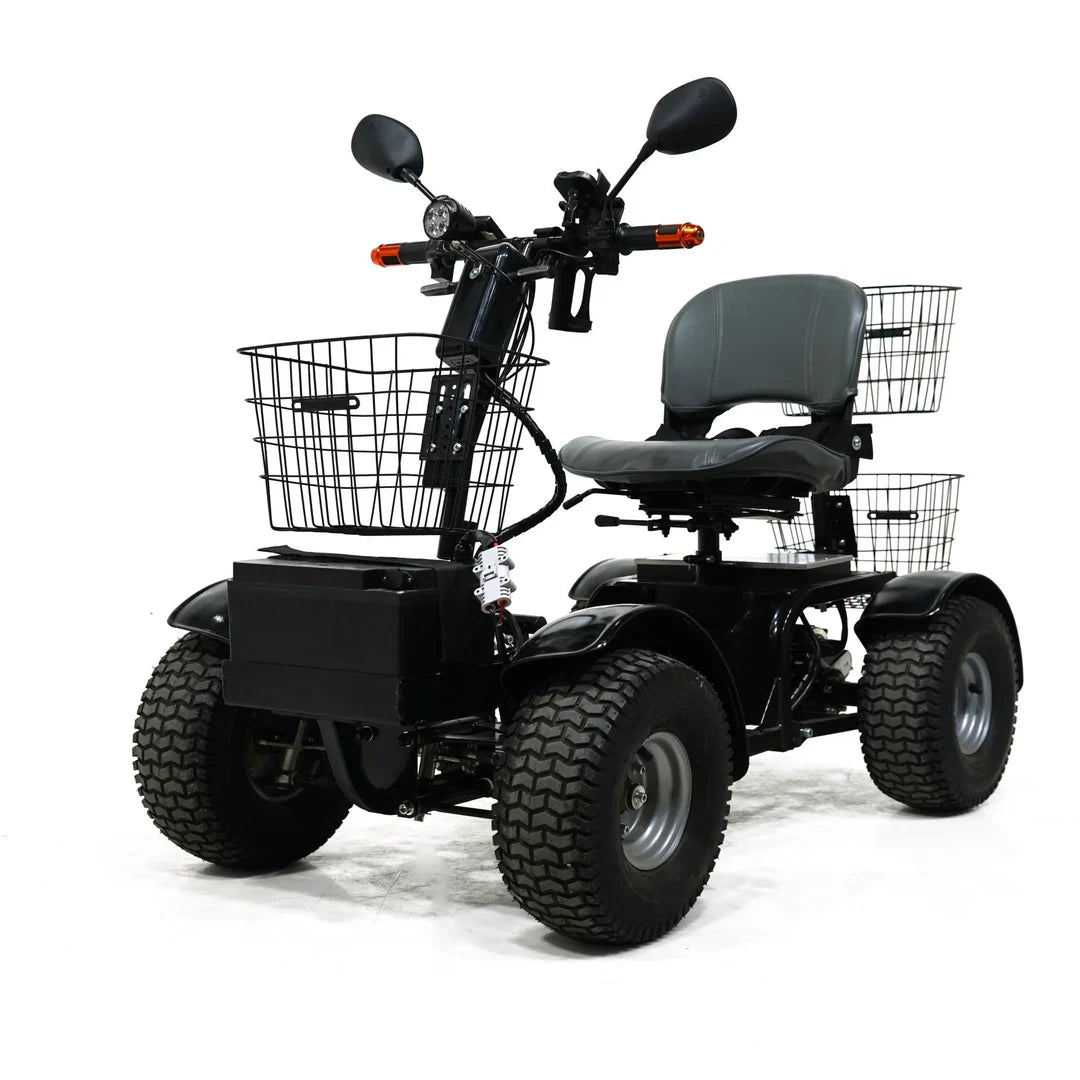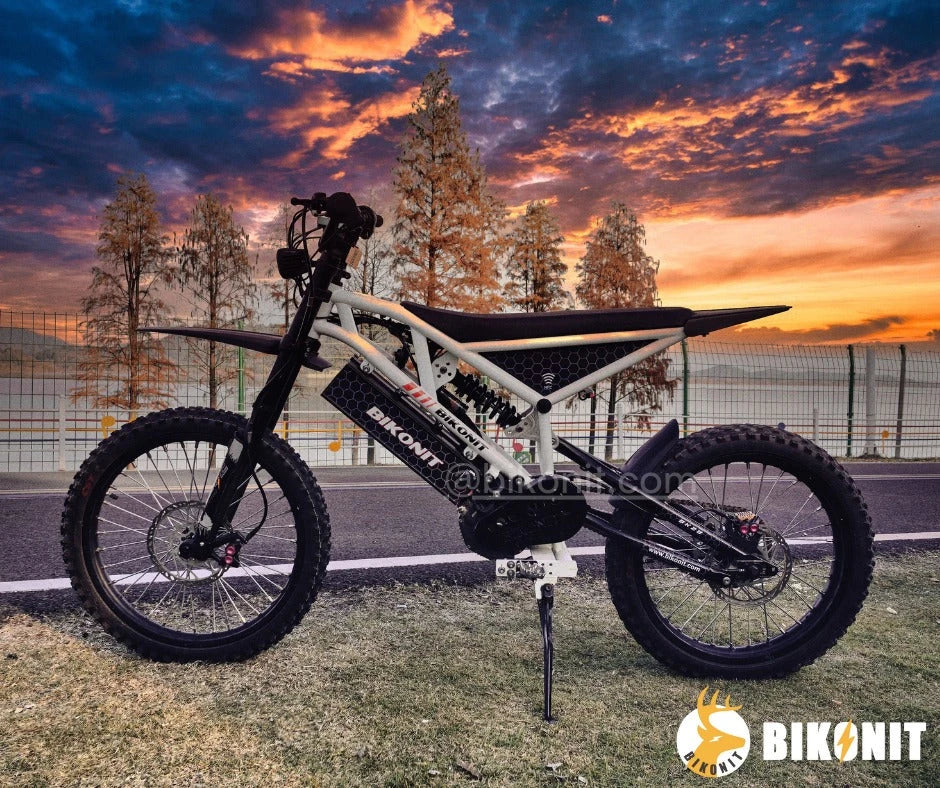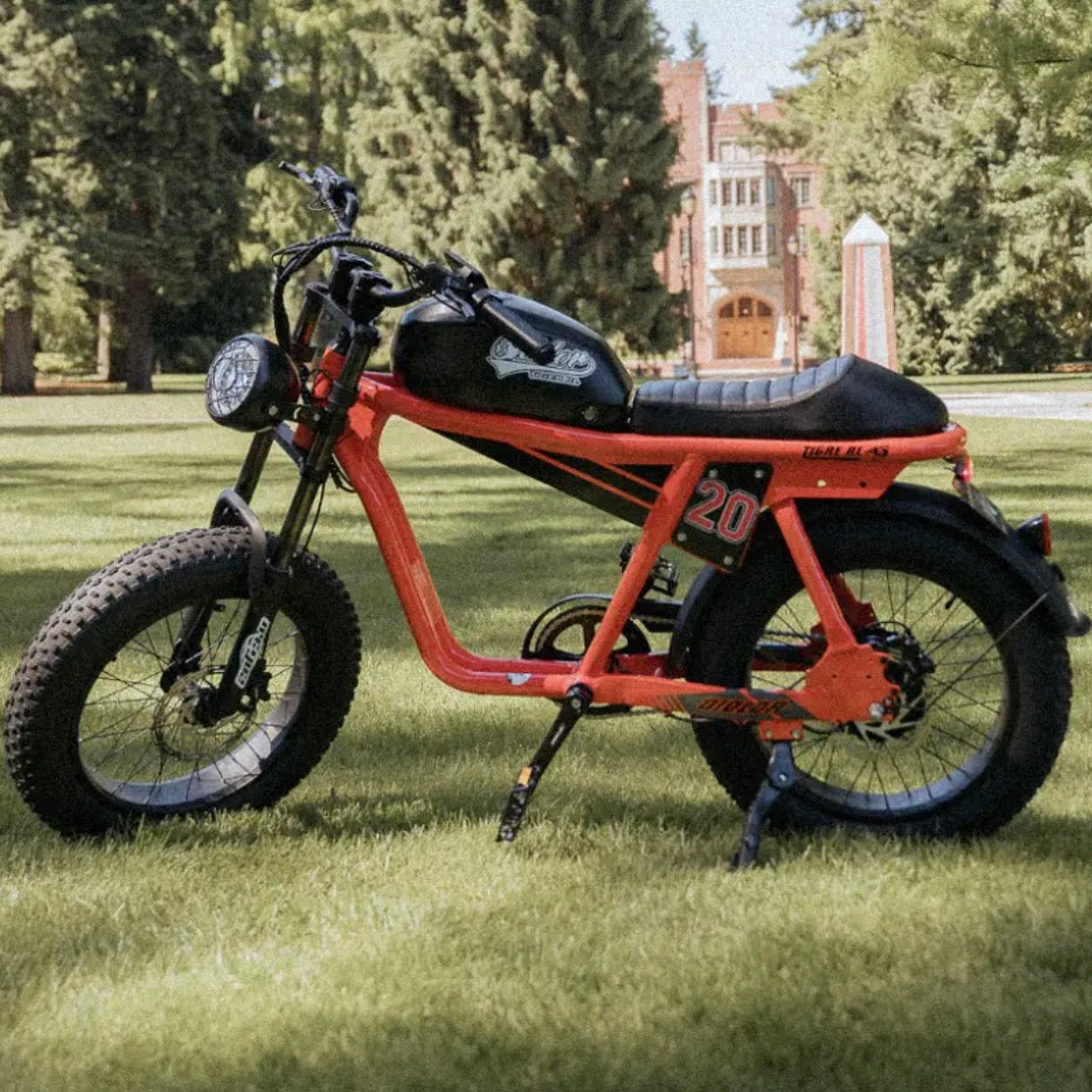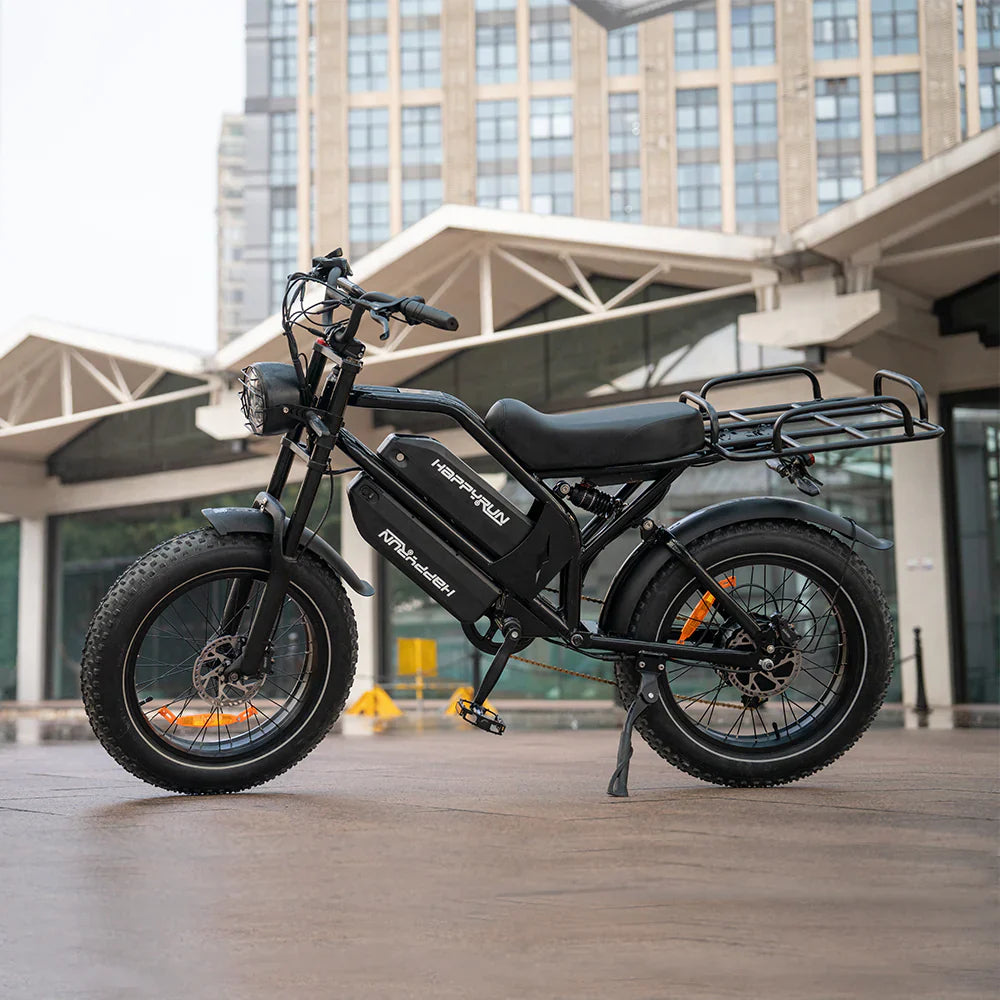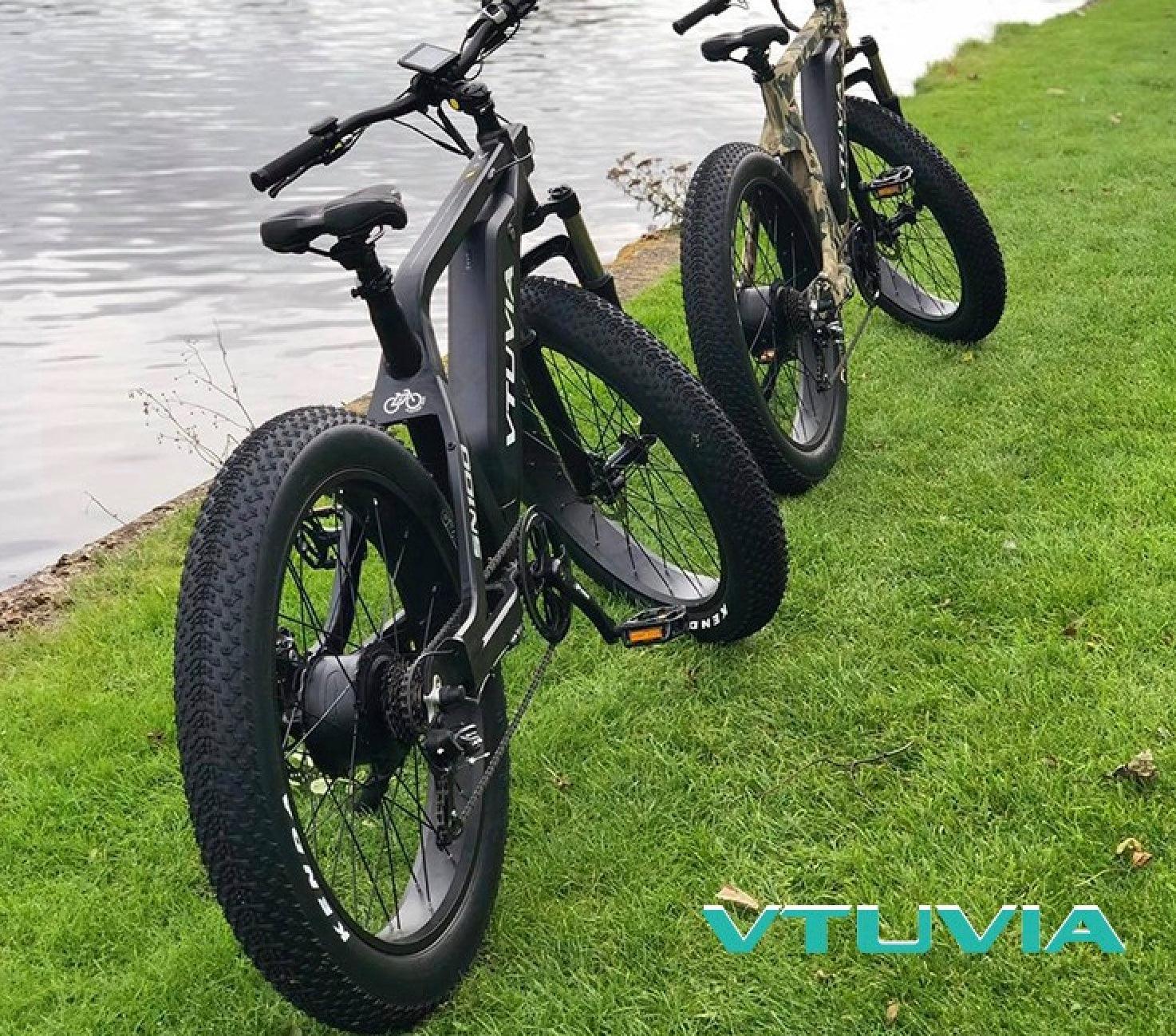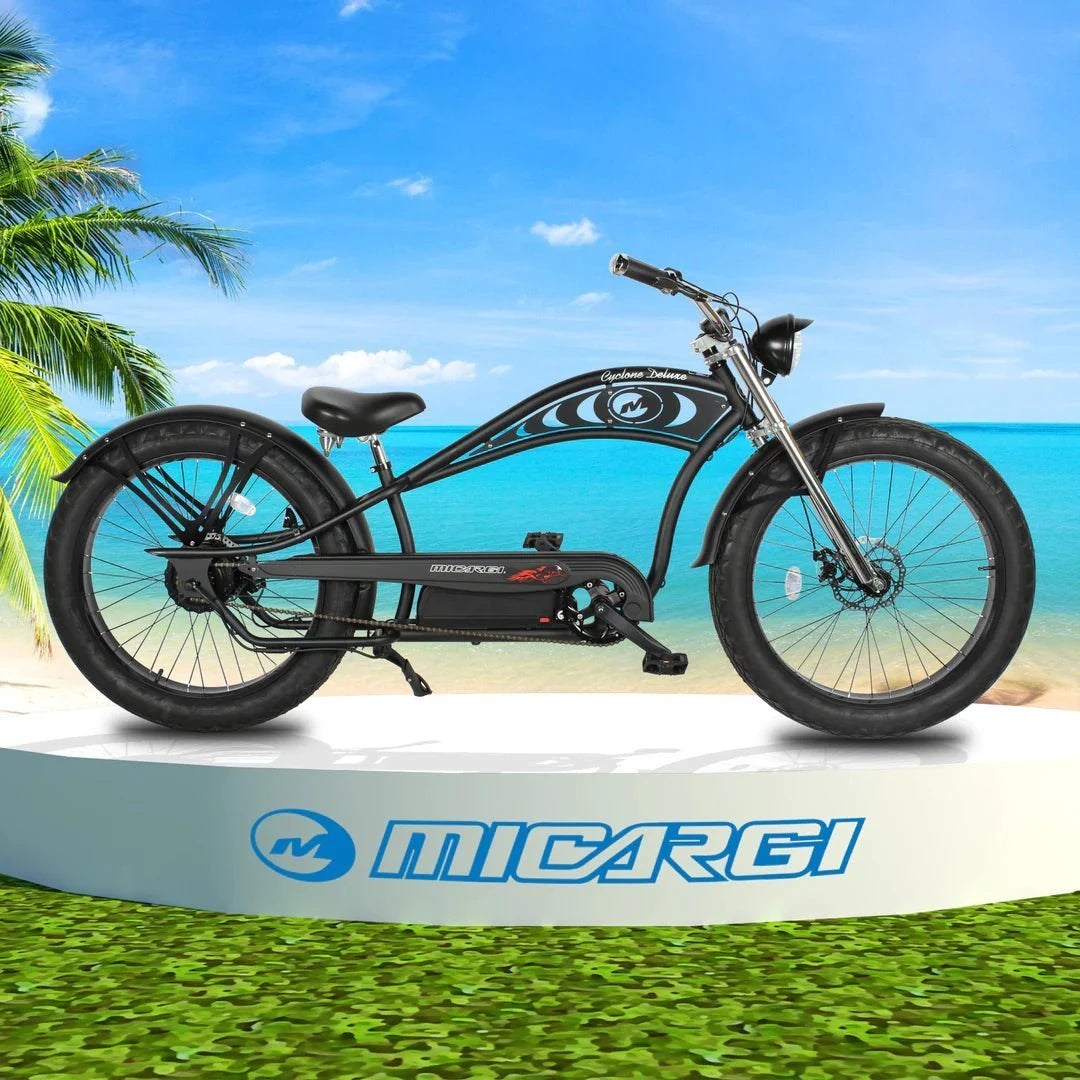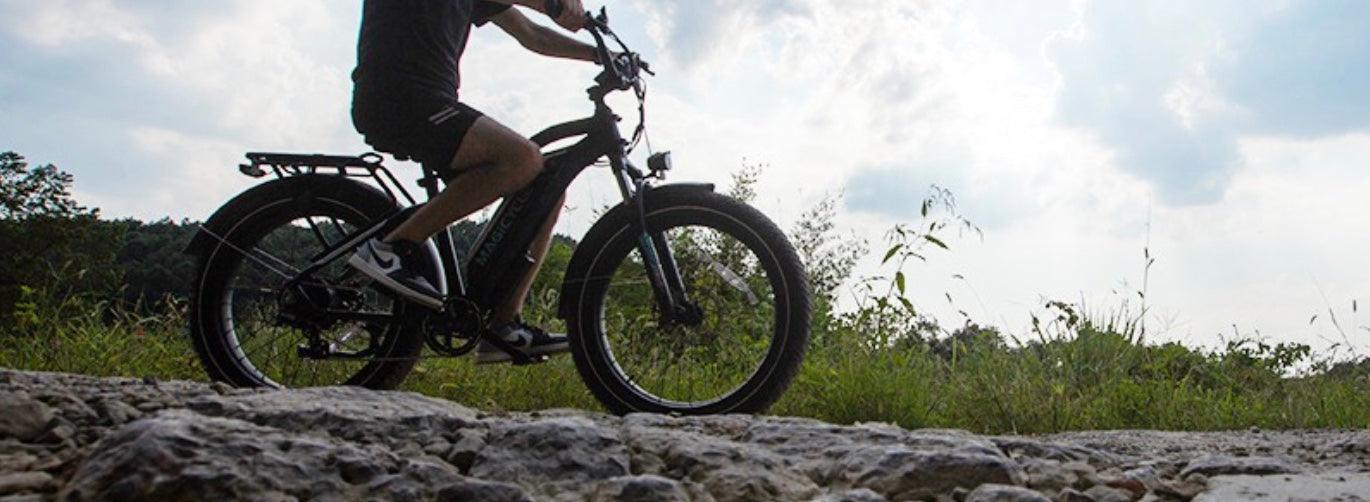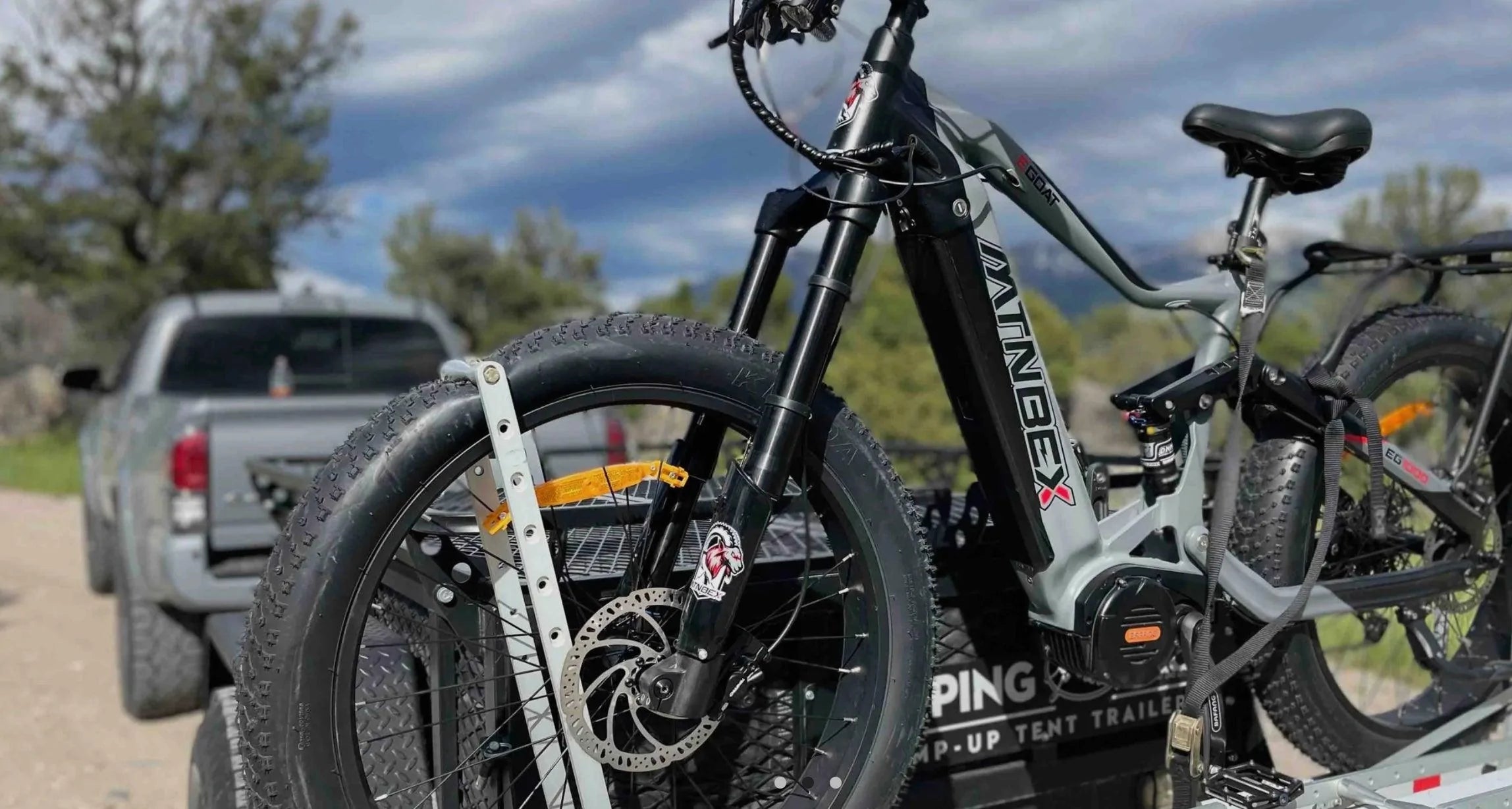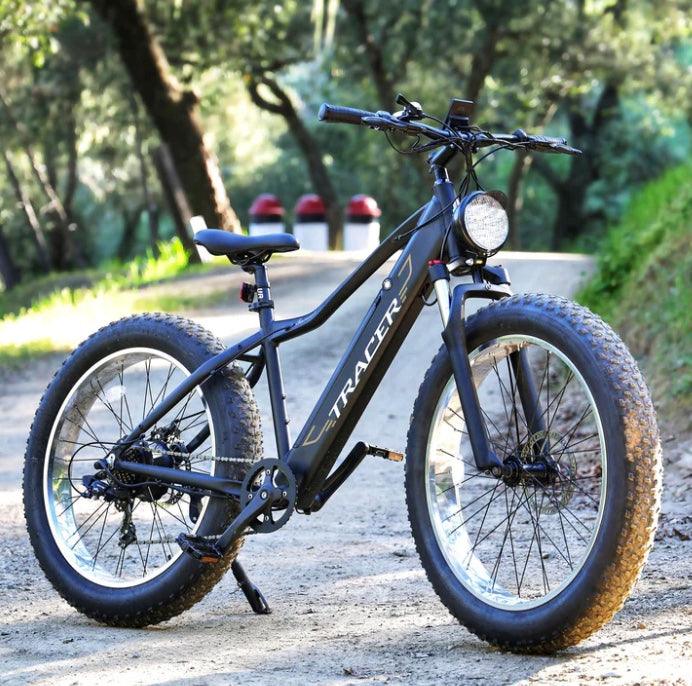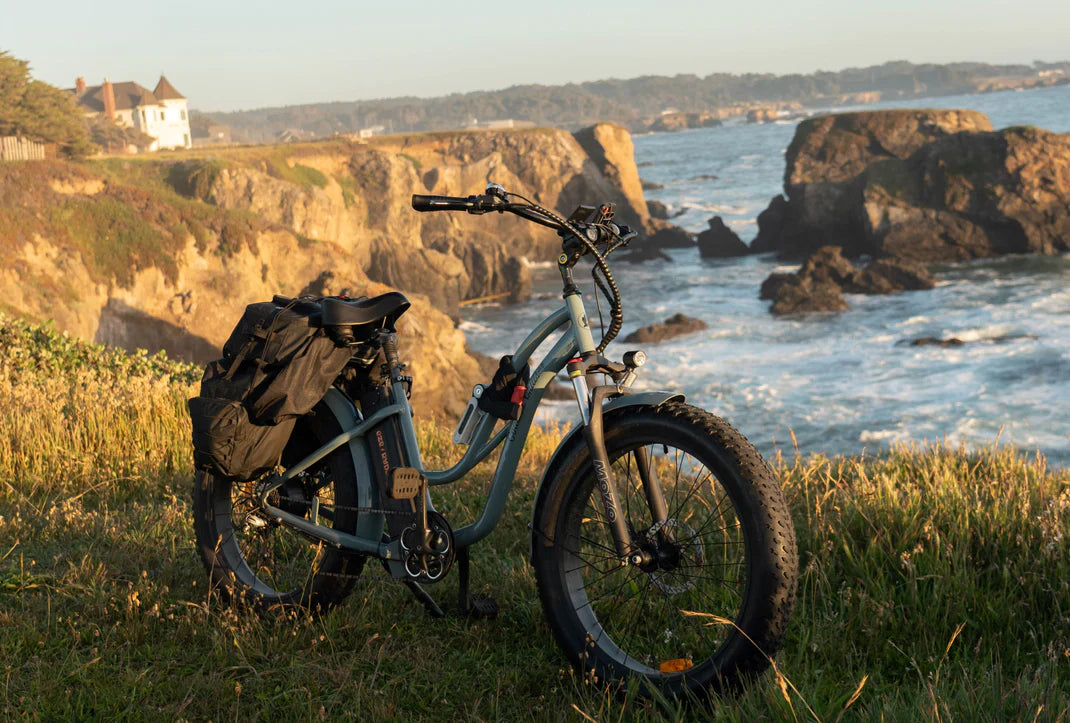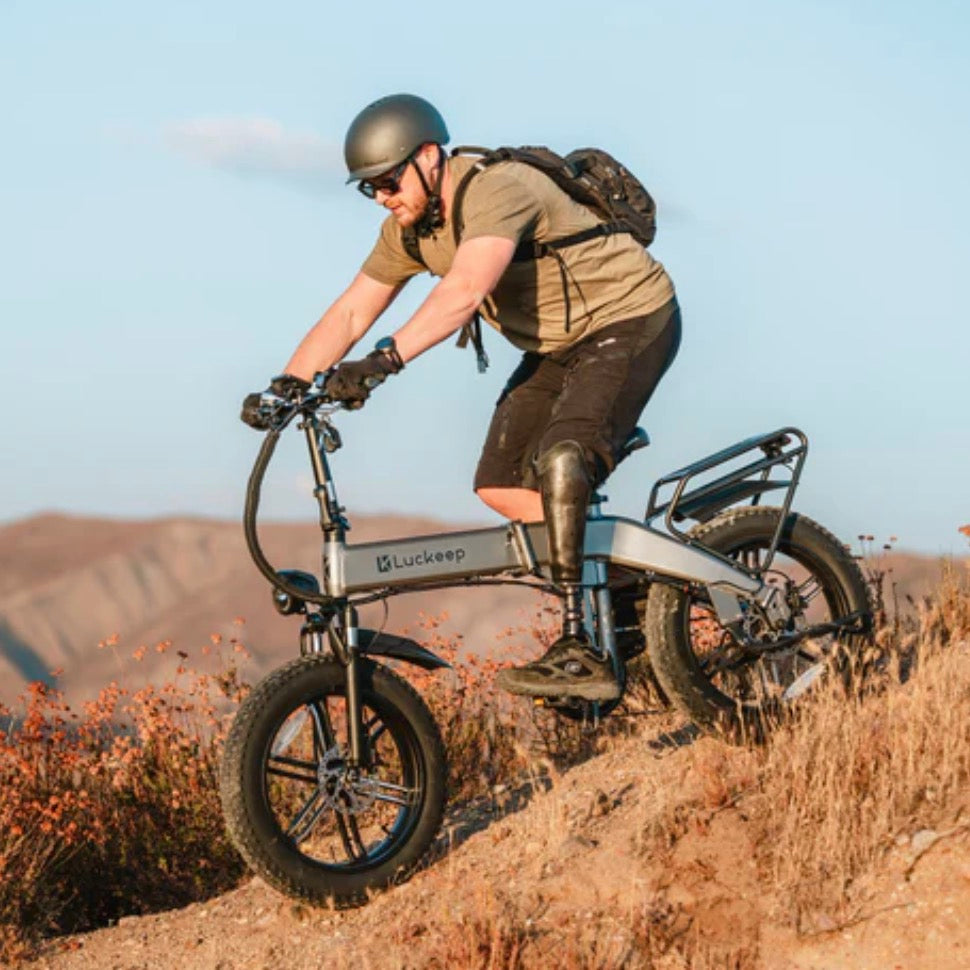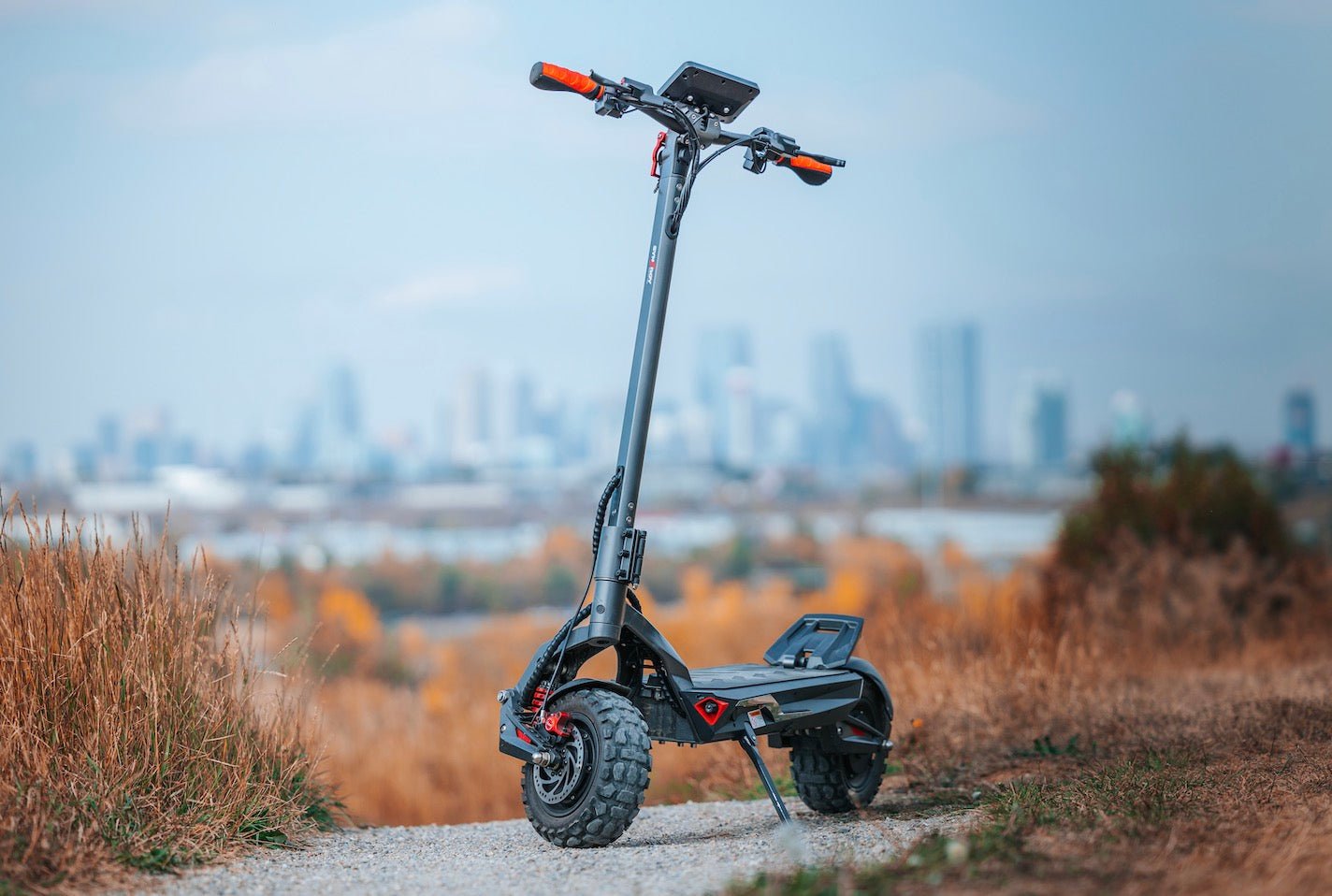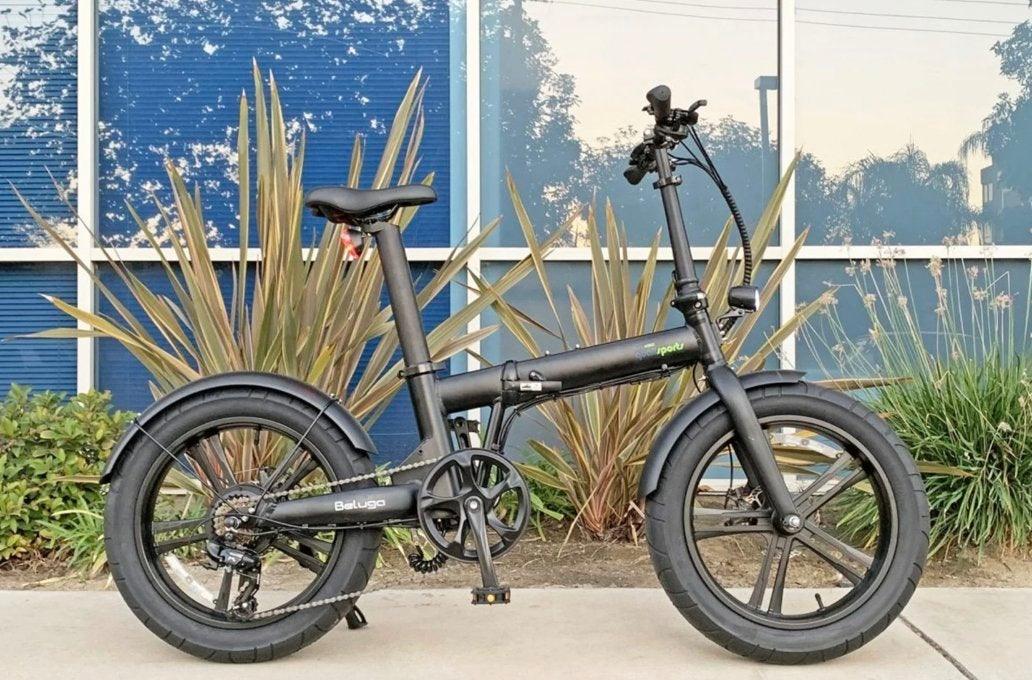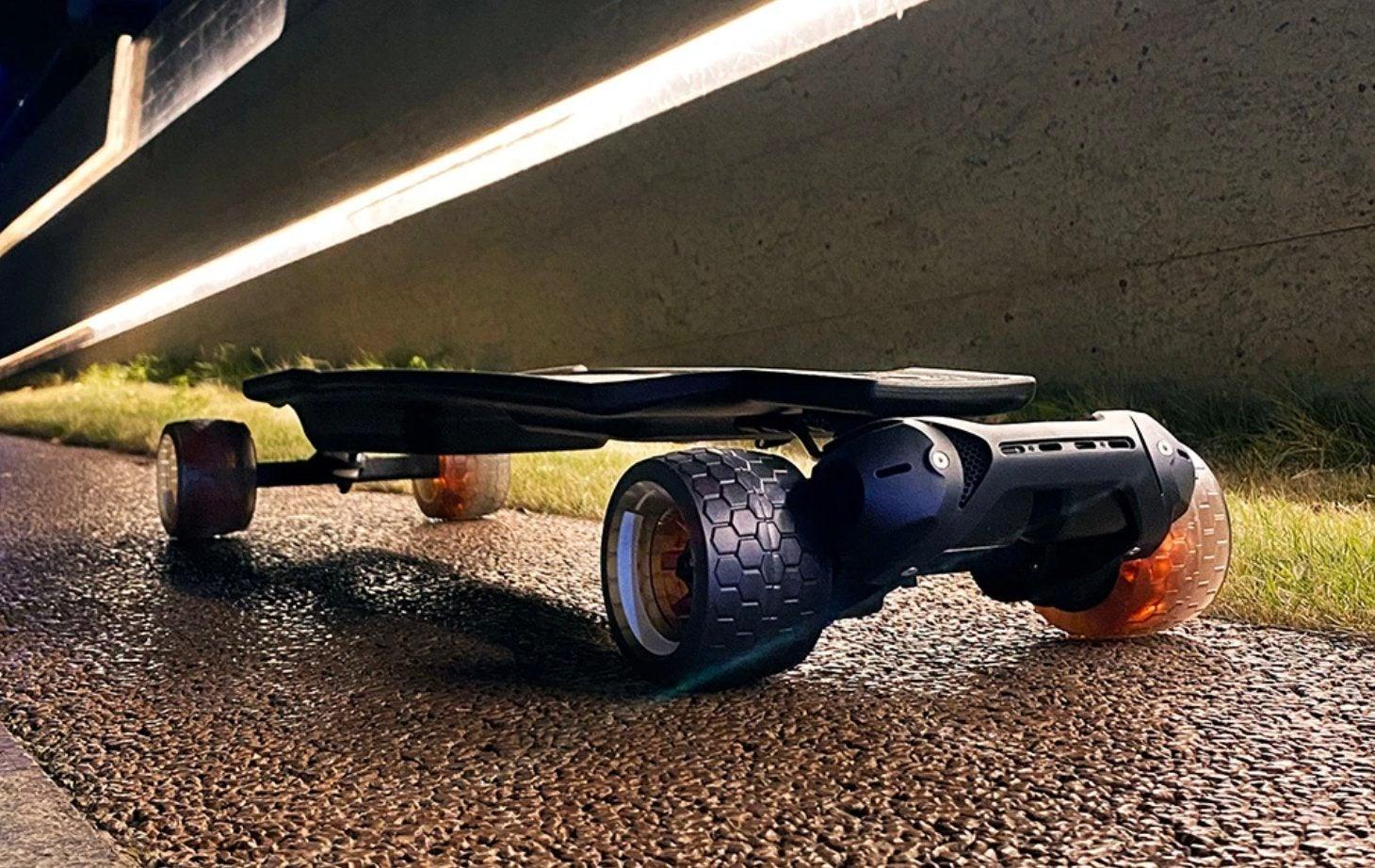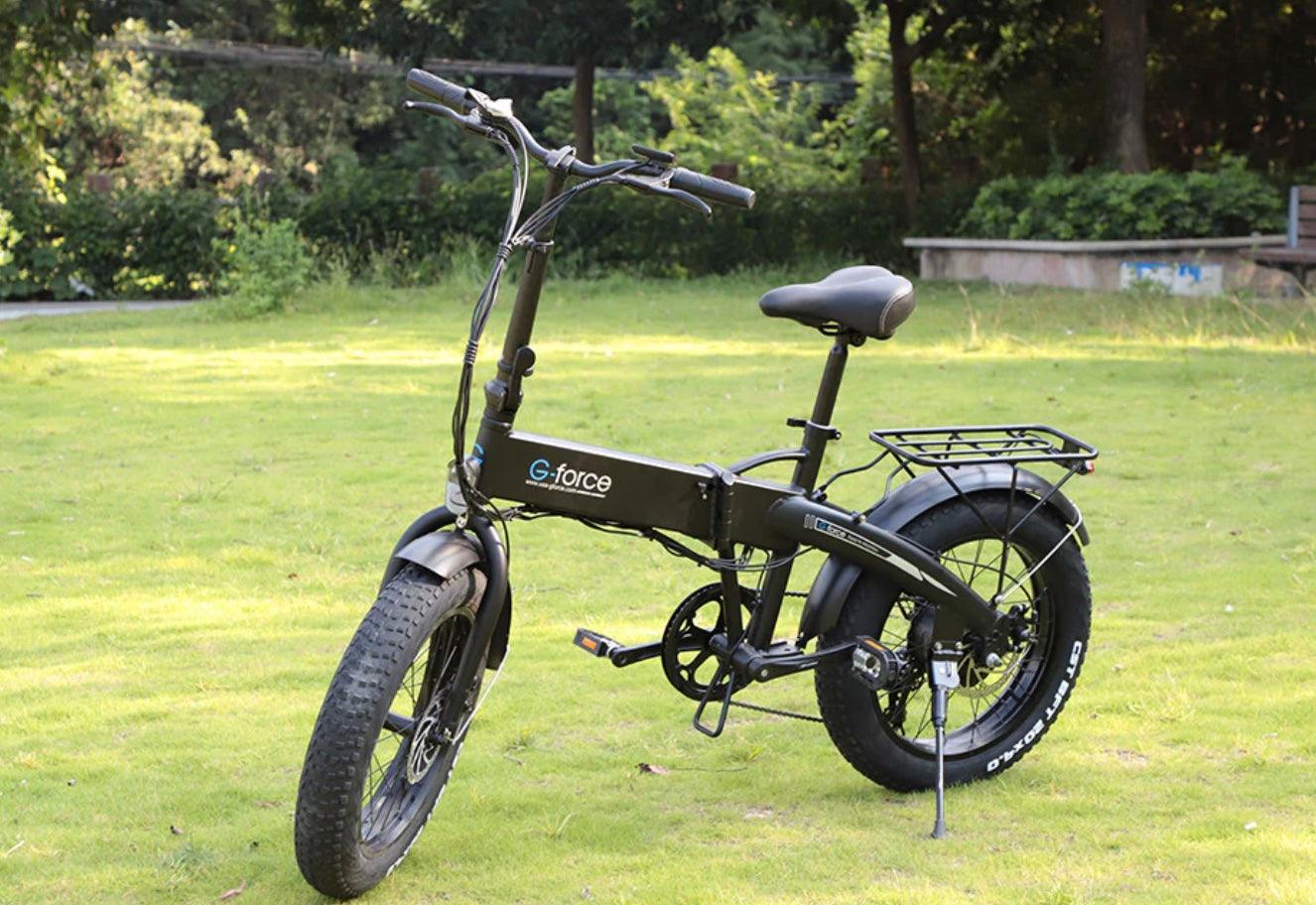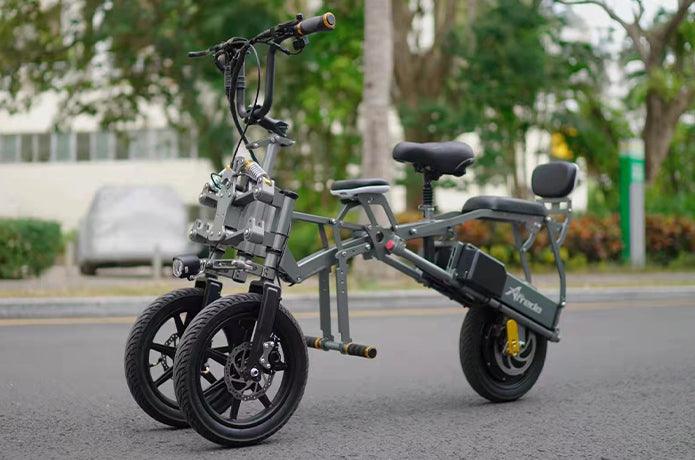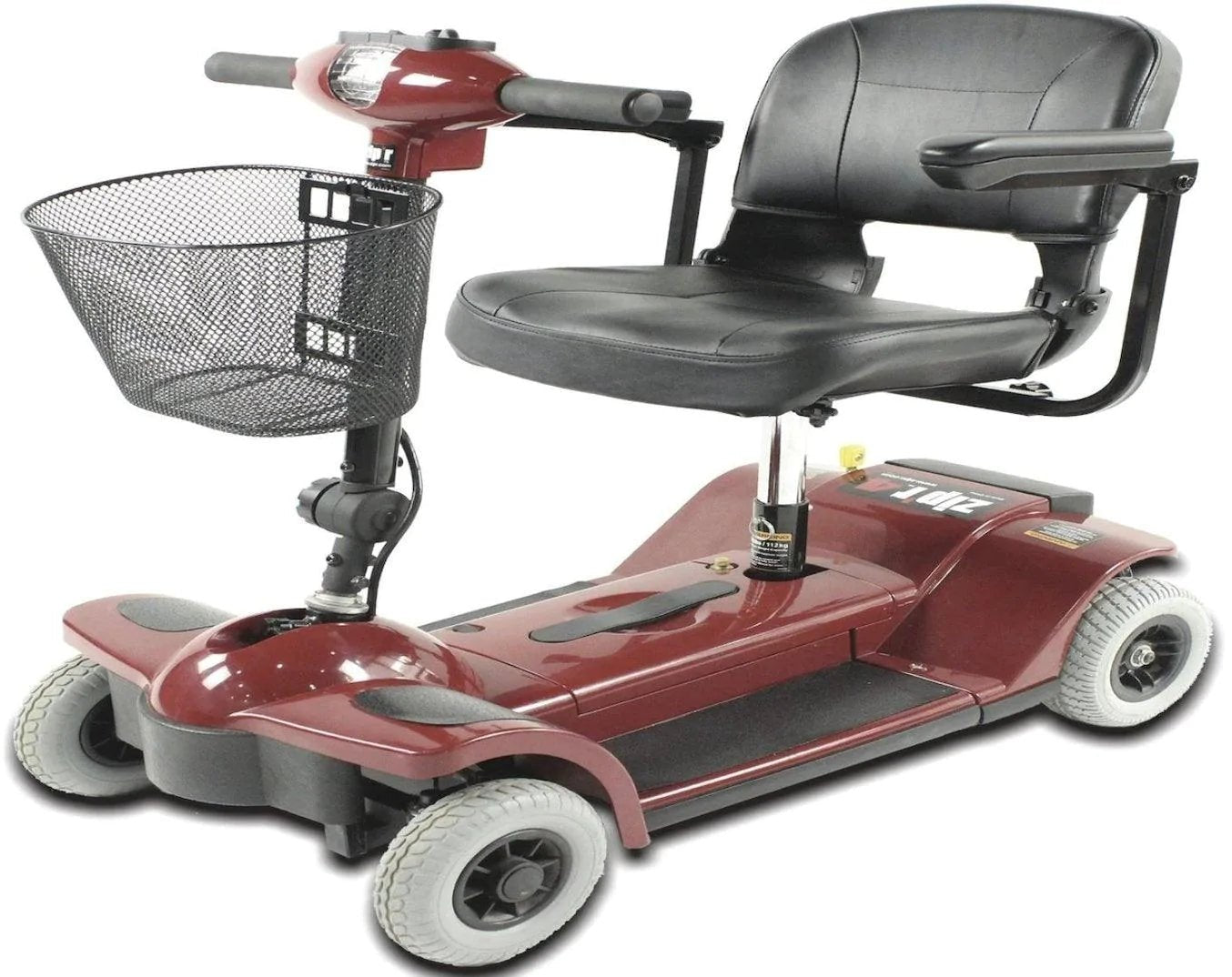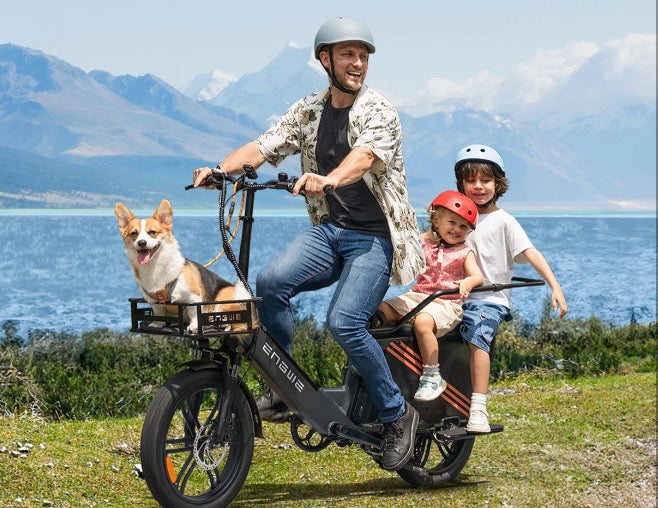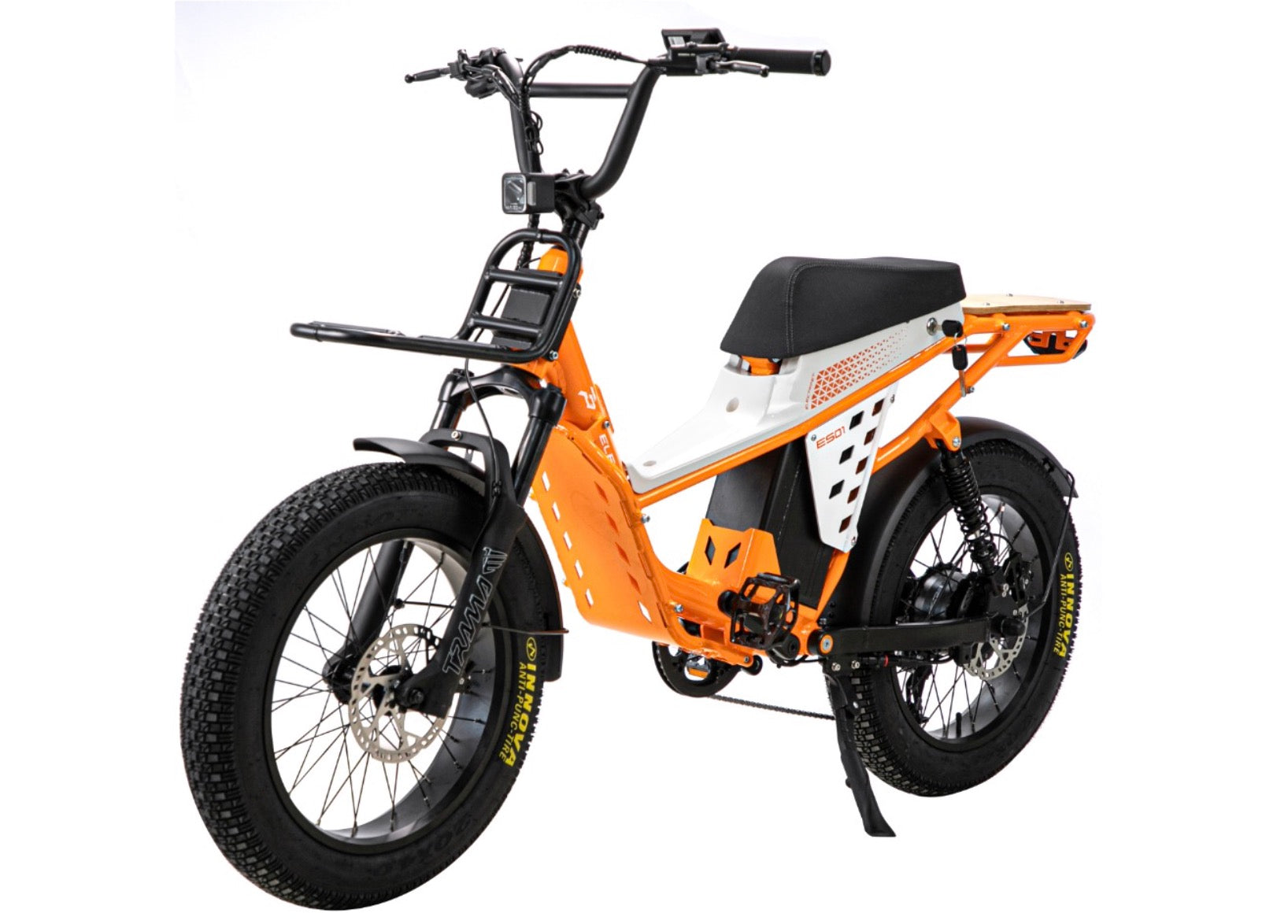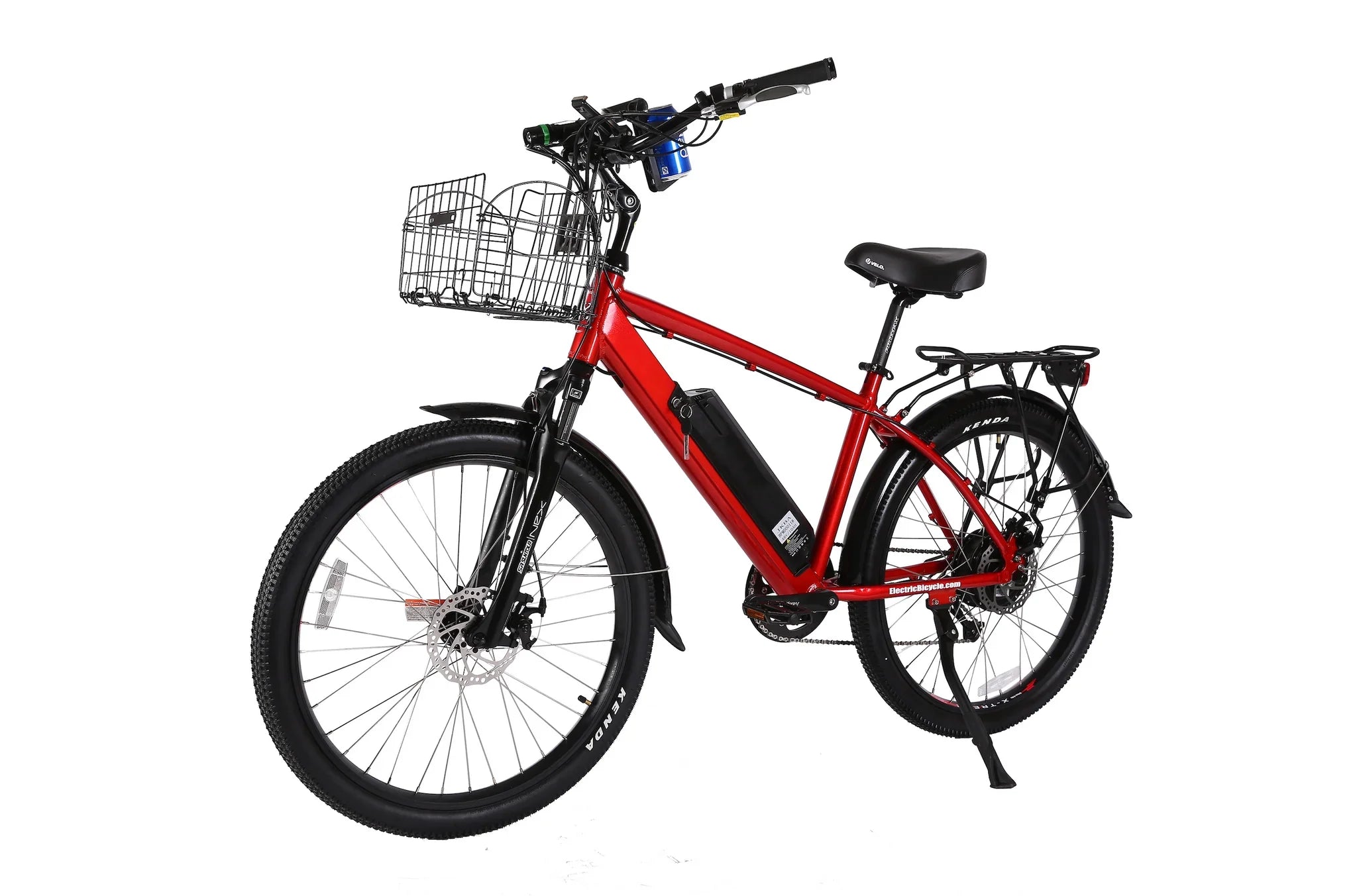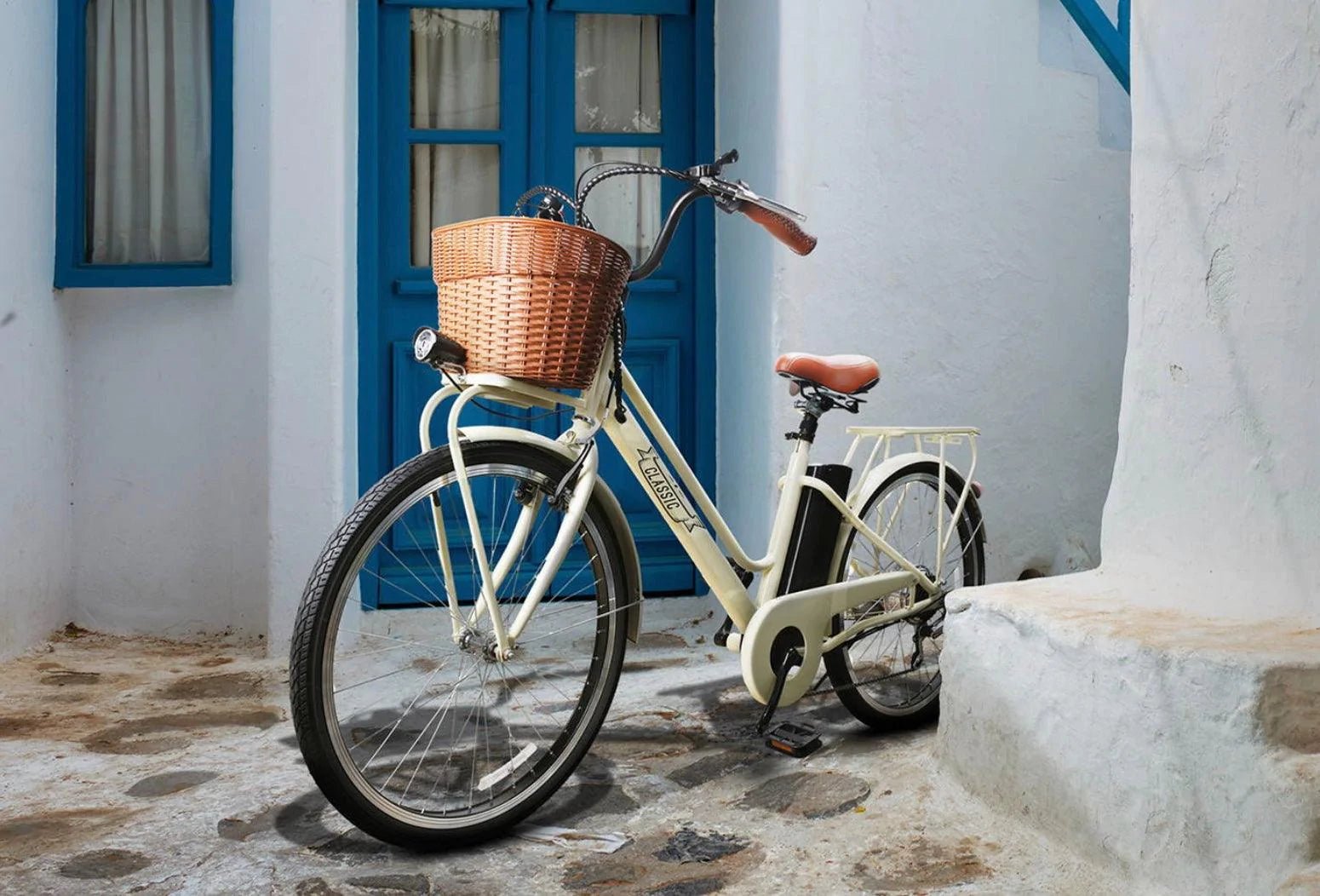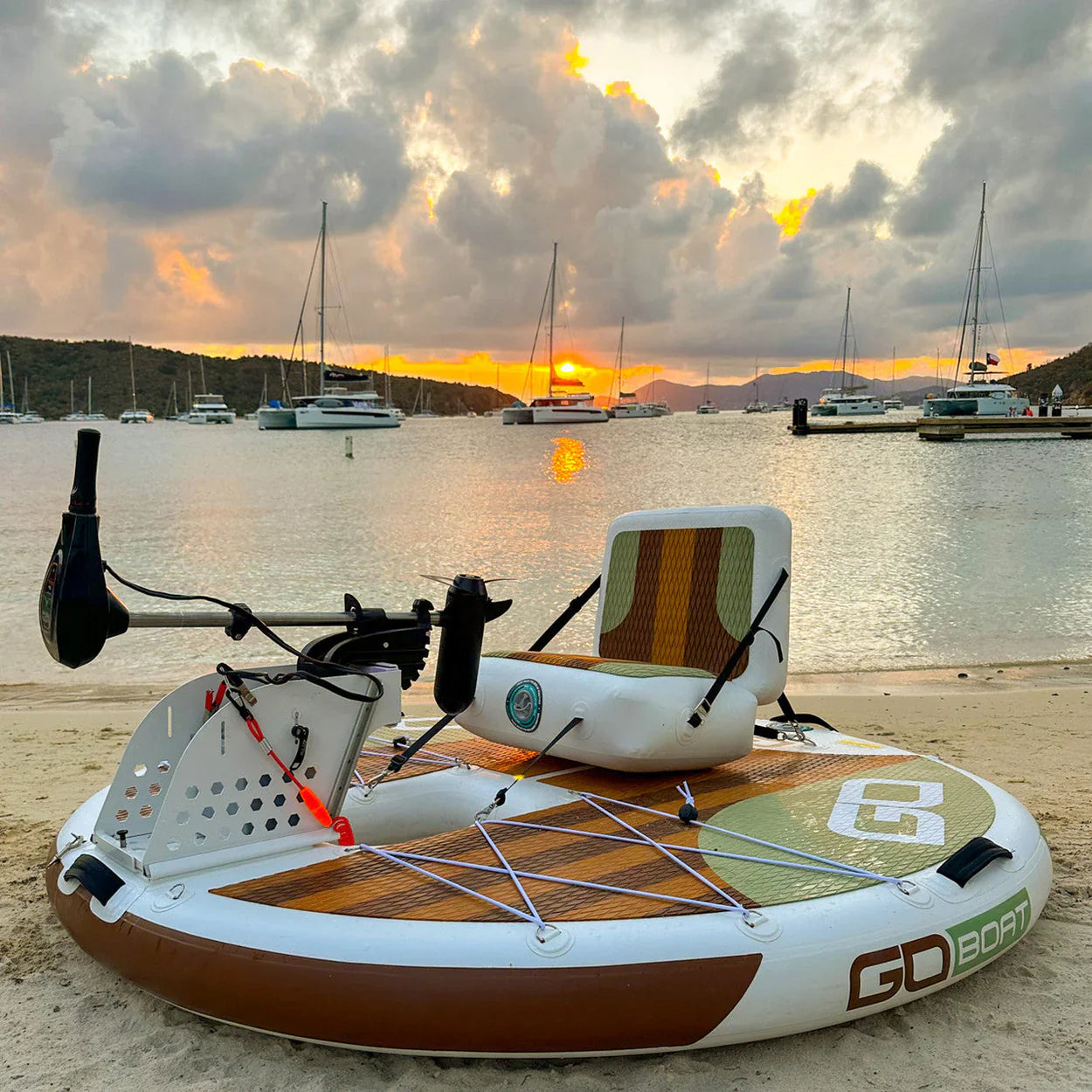eBike Range: What to Know and How to Extend It
-
Range is one of the most important features you should consider when comparing eBike models.
E-Bike range can be hard to determine because it will differ from one situation to another and between different ebike batteries and motors. It's quite hard to give a specific answer on how many miles a car can drive, and it's just as difficult to give a straight answer about the range of an eBike.
This article will cover what eBike range is and why it's such an essential factor to consider when choosing an eBike.
What is eBike range?
The range of an electric bike refers to the amount of time you can ride on one battery charge.
Bigger eBike batteries will give riders longer ranges because these batteries have a higher storage capacity.
What is the average range of an eBike?
There are many different electric bikes on the market, and they don't all have the same range. The average range of most eBikes is between 20-100 miles/32-160 kilometers; of course, the exact range will always depend on factors such as the power mode, riding conditions, cargo load, and terrain.
Factors that impact range:
- Total weight of the load, including the rider and gear
- Your average riding speed
- Your riding position
- The bike's tire pressure and tire type
- Terrain and hill grade
- Wind conditions
- Road quality and bumps
- The outside temperature
- Your pedal capability and fitness
- Type of battery
- Battery size
- Age of the battery
How much further can you go on an eBike, compared to a regular bike?
Electric bikes can be ridden as easily as regular bikes, but you can ride further using the electric pedal assist. Pedal assistance allows eBikes to cover greater distances in less time than the same journey would take on a traditional cycle or mountain bike.
Unlike a traditional bike, an eBike battery has a limited range, so you need to be aware of your unique physical limitations and the range of your battery. You can extend your battery and ride further by pedaling on level surfaces and downhill and conserving your battery for uphill or other challenging sections of your ride.
You could expect to get 22-50 miles out of most eBikes on a single battery charge with relaxed pedaling. In other cases, you will be able to ride even farther. There are several electric bikes available that can get 50+ miles on a single charge. Your electric bike's range will always be impacted by factors such as the battery capacity, incline, wind, and weight and size.
Some pedaling will always be required on QuietKat eBikes, even for models that have a throttle. You'll need to put some minimal effort into pedaling when riding up steep hills. Pedaling is excellent exercise and more fun, but it also extends the range of your battery.
While you're out riding, it's important to remember to track your time or miles covered. This precaution will help you keep track of your battery life, so you don't run out of power at the wrong time.
Which eBikes have the longest range?
There can be many different variables when it comes to range. However, as a general rule of thumb, you should expect a more extended riding range from electric bikes that come with a battery with higher volts and amp-hours. Cheap eBike models on the market often have a minimal range and are only equipped with a 36V or 48V battery.
Do electric bikes recharge when you pedal?
It is usually not possible for electric bikes to recharge themselves while you pedal. An eBike battery generally does not work like a car battery and does not recharge itself while running. A small handful of electric bikes on the market can charge themselves while you pedal, but most will not. QuietKat bikes do not recharge themselves while pedaling and will need to be recharged with a power outlet or solar charger.
How is the electric bike range measured?
Most eclectic bikes measure range in Wh/mi or Wh/km, depending on your country.
But what is WH/mi?
Wh/mi is a commonly-cited metric used for electric vehicle (EV) efficiency. Wh/mi stands for watt-hours per mile, or in the case of Wh/km, watt-hours per kilometer. The Wh/mi metric (in the USA) is one of the easiest ways to work out how much energy or watt=hours (Wh) is required to move an electric vehicle such as an eBike or car 1 unit of distance (either one km or one mile). You will see this metric used on many cars, including electric vehicles such as Teslas.
How far can a 750W electric bike go?
Multiple factors will always impact range, but generally speaking, most 500-750W eBikes will get you around 25 Wh/mi.
This estimate assumes that the electric bike is ridden on a flat or moderate incline. An electric bike with a 480Wh battery ridden in these conditions would provide you with approximately 19 miles of range. But a 750w electric bike can go approximately 28 mph (45 km/h) on flat ground.
A 750W electric bike is a popular choice for hunters, anglers, and ebike overlanding. Bikes of this motor size are moderately regulated without compromising on speed. We find that 750 watts are plenty for a hunting ebike.
Electric bikes with the most powerful motors are often more heavily regulated and consume battery power much faster than other Bikes. Because of this, 1000W eBikes can end up having more power but less range. Generally, 1000W electric bikes will come with a heavier, larger battery than most 750W eBikes. But we find for many use cases; a 750W bike is a sweet spot that provides both power and decent range.
Many of the 750W bikes in the QuietKat range are superior to 1000W bikes. For example, in the right conditions, the 750W version of the QuietKat Ridgerunner can take you up to 25 miles on a single battery charge. But the Jeep eBike goes even further and can be ridden for up to 40 miles on a single battery.
How far can a 250W electric bike go?
Most 250W electric bikes aren't suitable for tough terrain. These types of eBikes are best for light city riding on fairly flat and even paths. That's because there isn't enough power or torque in an eBike with a 250 W system. You can't power heavy riders up hills with a 250w eBike if you still want to maintain a reasonable amount of speed. Trying to use a 250w eBike like a 750w model will drain your battery exceptionally fast and result in a very short range. Cheap electric bikes with 250 W motors can only go around 15-20 mph when it comes to speed. If you're a serious outdoor enthusiast, you should use an electric mountain bike with 750w or 1000w capability.
How do I determine the range of my electric bike?
It can be challenging to determine the exact range of an eBike because of the various factors we have discussed so far. Many manufacturers would be reluctant to put a precise range on their eBikes because conditions could easily impact the measurement. So how can you plan for eBike trips if you don't know your range?
To determine the approximate range of your electric bike, you should first start by looking at the battery capacity.
The battery capacity will be noted on a bike's description and in its manual. The battery capacity of an electric bike will usually be measured in Watt-hours (Wh). On occasion, you may see an eBike battery rated using volts (V) and amp-hours (Ah). For example, an eBike may be labeled as having a 48V 10Ah battery. If you want to convert volts and amp-hours to Wh, you should multiply the number of volts by the amp hours.
The next step is to calculate the effective bike range by taking the Wh capacity of the bike's battery and dividing it by an average efficiency number (which can be in either Wh/mi or Wh/km depending on the country).
Wait, what's the efficiency number? At this point, the math can vary. Your efficiency number will vary based on many factors, such as the rider's weight, incline, wind conditions, and tire choice. However, based on the earlier generalizations, a 750W eBike can go around 25 Wh/mi.
How can I increase the range of my electric bike?
Naturally, every adventure enthusiast wants to use their eBike to ride further, faster, and for longer. Compared to traditional cycles, eBikes can undoubtedly provide you with these benefits. Plus, eBike batteries are continually seeing improved performance as new electric bike technology gets developed. But that doesn't mean we shouldn't aim to extend our range further to increase our scope for exploration!
Thankfully, there are several simple measures you can take to improve the range of your eBike. Follow our tips to improve the eBike's range and squeeze out a little bit more power from your battery. And sure, you can always upgrade parts or update your battery to increase your range, but there's a lot of easy changes you can make for free as well. A simple change in riding behavior can have a significant impact on your range.
Here are some easy habits and changes you can make to extend the range of your eBike.
Go easy on your throttle
Hand throttles aren't standard in Europe but are prevalent in American eBikes - in addition to pedal-assist bike features. Many American riders (and those in other countries which allow hand throttles) will find that hand throttle is one of the quickest ways to drain your bike's battery and reduce range.
Remember that each time you accelerate using the throttle, you are using significantly more battery power than you would while cruising or pedaling manually.
That doesn't mean you shouldn't ever use your throttle; after all, it's there for a reason. But you'll undoubtedly want to be discerning about when you choose to use your throttle. If you are riding up steep hills, you will naturally need to use it more extensively, but you should be aware this will limit your range.
Instead of using the full-throttle every time you want to accelerate, you should instead try to ease into the throttle. Yes, this will mean you accelerate a bit slower, but by sacrificing a little bit of speed, you can increase the longevity of your battery's charge. This technique will help minimize the amount of battery power used by your bike each time you accelerate. Additionally, this method can also help keep the bike's battery cooler, enabling the bike to use even more efficiently.
Pedal while you accelerate

If you're reducing your reliance on the throttle, you will naturally find yourself pedaling more. It's easy for riders to become reliant on their throttle and grow to dislike pedaling but remember it's great exercise and will extend the range of your bike.
Regular pedaling will conserve battery, so you don't have to continuously pedal later if your battery runs down! (And that's what this article is trying to help you avoid)
By using the pedal-assist feature carefully while riding, you can make your range more efficient. Generally, most pedal-assist electric bikes will get you around 15 Wh/mi when ridden around 15 to 18 mph utilizing medium levels of pedal assist.
Acceleration is usually the most significant single-use of battery power - especially if you stop and start frequently. If you can pedal while you accelerate, even just a few seconds, you can significantly reduce your battery usage. When you add up every acceleration, those few moments of pedaling can pay off as some pretty significant energy savings,
Coast when you can
Naturally, adrenaline junkies love to use the throttle of an eBike and get to those high speeds. But coasting can significantly increase your bike range.
But there's something about coasting through the countryside and admiring the view that can be equally as fun.
Of course, there's a time for coasting, and a time for pedaling. Here are some of the times you can coast to conserve battery energy (and your physical pedal strength).
- When you approach a stop
- When you're on a smooth path
- As you come out of steep decline to the flat
- When the view is worth it!
As you approach a stop ahead, such as an intersection, you should let off the throttle and simply coast to the stop. Riding full throttle right up until you need to brake is just a waste of your bike's precious battery energy. If you know that you will be coming to a stop, you can save your bike's power and your pedal energy by coasting for a minute. Sure, this extends the time of your ride slightly, but that can be a good thing. With more battery, you can ride for longer times and distances.
Plus, it doesn't hurt to slow down in life occasionally. One of the best things about a QuietKat eBike is that it can take you into the great unknown to explore some of the country's most beautiful and remote parts. If you're powering through the woods at full speed, you won't have a moment to take in the view, or metaphorically stop and smell the wildflowers.
There's a time and place to slow down. Obviously, don't slow down in a risky place for yourself or other riders, such as on a busy bike path or when riding in traffic. But slowing down, even by just a couple miles per hour, can make a significant difference in the range of your eBike. You would be surprised how slowing down even slightly can decrease the amount of energy you use by trying to maintain a high speed throughout your entire ride.
Ride in the right gear
Riding in the wrong gear can put more strain on your battery than you need to. As you grow more familiar with riding an eBike, you'll grow accustomed to shifting gears correctly and in a way that can conserve your battery. When you're riding on the flat, you can adjust your gears and level of power assistance relative to how much energy you want to exert peddling. If you're out for a long, all-day ride, you can conserve your battery power while riding on the flat and only use it for hills.
Then when it's time to tackle a steep hill, you can increase your bike's power. You may need to change both power and gear levels to get the ideal speed and utilize your battery efficiency. As you go downhill, you should decrease the electric assistance level and use eco. Then, shift up to one of your highest mechanical gears.
To conserve battery, you should also shift your mechanical gears to a low and easy setting before you stop. When you stop the eBike in high gear, it makes it more challenging to start pedaling when you next ride, which can require more battery assistance to get you started.
By ensuring you adjust your gears while riding, you can preserve the battery life and extend the range of your electric bike. You should regularly adjust your cadence for more efficiency while riding. Riding all day in really high gear will make it much harder to push pedals, wasting your energy and the bike's energy!
Riding incorrectly in the wrong gear - such as a high gear on a flat surface - will increase your reliance on using pedal assist, which will drain your battery faster. Check out our blog to learn more about eBike gears and how to use them.
Pump those tires!
Tires can have a big impact on the quality and comfort of your ride. The correct tire pressure can help make your ride more efficient and more comfortable, plus it can help prevent punctures and flat tires.
You should ensure that your eBike tires are kept pumped up to their maximum air pressure rating as much as possible. An eBike pump should be a standard part of your ebike maintenance kit. Certainly, your tires should at least be fully pumped when you set off, and ideally, you can top them up while on long rides as well.
Why does tire pressure matter?
Simply put, full tires have less rolling resistance. That means that your eBike's battery doesn't need to use as much energy to get you moving on full tires as it would on flat tires. The impact of tire pressure on performance is a well-known concept for car tires and something that eBike enthusiasts have also noted when riding their eBikes.
Filled tires that are maxed out can add some significant distance to your range. Who wouldn't take a few minutes to pump their tires if it means getting a few extra miles in range on their next ride?
Choose the right tires
Choosing the right tires will also impact your range. Some terrains and conditions call for specialized tires. So if you're riding in the snow or sand, for example, you should switch to the appropriate tire. This method puts less pressure on the throttle and battery to get your tires rolling on challenging terrain.
Check out our Vee Studded Tire if you want to get some extra grip on the trail.
Charge your batteries
It should go without saying that the most obvious way to extend your battery range is to diligently fully charge your battery before long journeys. Proper planning to ensure you charge your battery before a big ride will ensure you always get the best experience from your eBike.
Whenever you go out for a day ride, you should get in the habit of charging your bike overnight before you put it away. That way, if you decide to go for a spontaneous ride, you're all ready to go!
Most eBike batteries, particularly lithium batteries, will get the best range when they are at 100% charge. You may be able to get away with charging an eBike battery once a week if you're only making short trips on a commuter ebike. While this may conserve electricity, it will decrease your range and efficiency and harm your battery. If an eBike battery sits in a state of being partially discharged for most of its life, it may decrease performance. If you're concerned with conserving electricity, then a solar panel charger is an eco-friendly alternative.
If your electric bike has been in storage for some time, you should check the batteries before your ride. Even if you store the bike at full charge, the batteries can drain if they haven't been used for a long time. Think of your bike like a car and restart it every now and then if it's not being ridden frequently. Regular battery maintenance will extend not only your ride but the lifespan of your eBike and its battery.
Bring a backup!
If you really want to extend your bike's range, a second battery may be required. You can easily keep a second, smaller charger on your eBike, or you can bring a solar charger for longer trips. It's not too heavy to bring a second battery, so for multi-day trips, a backup is the best solution to extend your range. Carrying a second eBike power source or charging option is recommended for any eBike camping trips, Overlanding adventures, or when using an ebike for fishing or hunting excursions.
Power & battery accessories
Portable eBike Solar Charging Station
Our portable solar charging stations are an excellent option for anyone who is going on extended trips on their eBike, or who wants to use an eco-friendly power source to charge their battery. With a solar charging station, you can extend your battery from almost anywhere in the world, even if you're in the depths of the backcountry.
These compact chargers can fit easily in your backpack and connect directly to the bike battery for maximum efficiency. You can set up the solar charging panel while at your campsite, sitting in your deer stand, or when out on the water fishing, or while hanging out at the camp. The charge time of these solar chargers is roughly the same length as charging from a traditional outlet. But you will need to have the panel in direct sunlight.
Spare batteries
Spare batteries can be a lifesaver if you misjudge your available range or want to extend your riding trip. Different QuietKat bikes are compatible with different batteries, so make sure you choose the right battery for your model if you need a spare.
E-Bike Batteries
Most of these tips can help you increase your range without spending any extra money. Naturally, if you want to take extended trips on your eBike, you may need to purchase a second eBike battery or a solar power charger. But for most day-trippers, a few changes in riding behavior can give you more bang for your buck and more battery to play with!
Conclusion
It's crucial for all eBike riders to understand how their bike's range works. Understanding the limitations of your bike's battery will help prevent any unfortunate flat batteries down the line. By taking the proper conservation measures, you can use your bike's battery to take longer and more fulfilling rides in the future.


